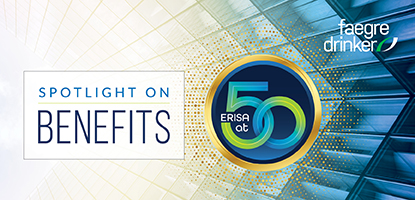Written by members of Faegre Drinker’s benefits and executive compensation team, this blog features analysis and information on matters related to retirement plans, health and welfare plans, ESOPs, ERISA litigation, fiduciary governance, and other benefits issues.
This quarterly digest provides links to our most popular posts during the past few months so that you can catch up on what you missed or re-read them.
By Mark Rosenfeld, Erik Vogt, and Mark M. Brown
SECURE 2.0 introduced several new distribution options and tax reporting rules for defined contribution plan sponsors. In this post, we overview the new provisions and their potential implementation dates.
By Stephanie L. Gutwein and James E. Crossen
On January 30, 2023, President Biden announced the Administration’s plan to extend the current declarations of the COVID-19 national emergency and public health emergency (PHE) through May 11, 2023, and end both emergencies on that date. The end of the national emergency, which was originally declared in March 2020, will cause certain employee benefit plan-related deadline extensions to conclude this summer.
By Gregory Ossi and Caitlin M. Britos
The U.S. Court of Appeals for the Seventh Circuit recently ruled that Central States, Southeast and Southwest Areas Pension Fund may continue its lawsuit against Transervice Logistics, Inc. and Zenith Logistics, Inc. seeking allegedly outstanding pension fund contributions. The case examined two consolidated appeals, each involving a nearly identical collective bargaining agreement (CBA) between each employer and a union, and trust agreements between each employer and the plaintiff fund.

